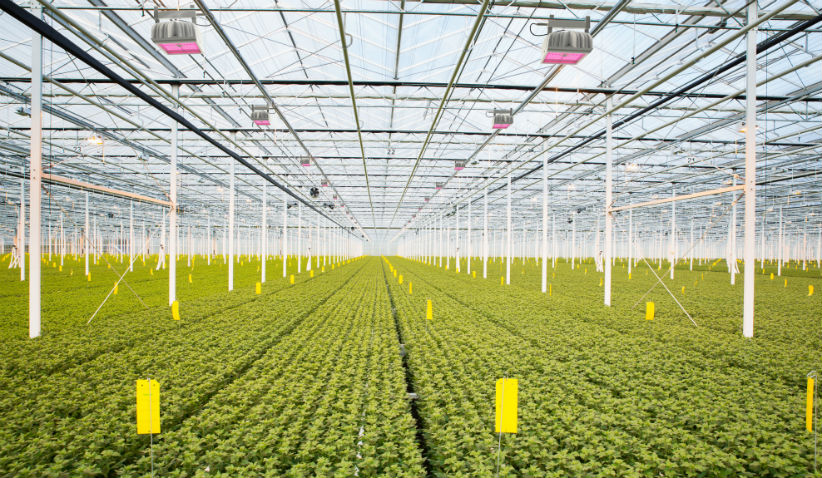High power horticultural LED grow lights outshine high-pressure sodium grow lights

The advantages of horticultural LED grow lights are becoming clearer to growers and greenhouse managers alike. And making the switch from high-pressure sodium lighting is easier than you think.
Compared to other traditional lighting technologies, high-pressure sodium (also known as HPS) has proven efficient and, with its orangey-yellow colour, well-suited to plant growth.
But this 50-year-old technology is showing its age, as more and more growers experience the benefits of replacing HPS grow lights with LEDs.
LED lighting has many advantages for horticulture: it uses less energy, lasts much longer, produces less heat and can provide light that’s perfectly tuned for optimal plant growth.
Even so, the higher capital cost and lower light output of many LED products – not to mention the disruption of installing them – has discouraged many growers from investing in LEDs as a replacement for their aging HPS systems.
Now that’s all changing. LED grow lights have reached the point where they can match or beat high-pressure sodium on important measures – including cost-effectiveness. And thanks to solutions such as Hyperion, making the switch to LEDs is much easier than you may think.
Designed to offer one-for-one replacement of HPS fittings, Hyperion makes it simple to reap the benefits of LEDs, offering easy installation and light output that is comparable or superior to HPS.
Hyperion achieves this by harnessing Plessey’s unique LED chip technology, manufactured in the UK. Most LEDs are made on a base of sapphire, which limits the amount of light they can emit. But Plessey has developed a way to manufacture LEDs on a base of silicon, making it possible to produce more-powerful LEDs with distinctive spectral profiles in a cost-effective manner.
The technology is perfectly suited to horticultural applications where large amounts of light are required. Hyperion is available in versions providing 1000μmol/s and soon,1600μmol/s, powerful enough to replace 600W and 1000W HPS lamps.
The ability to replace HPS fittings on a one-for-one basis also means you don’t have to worry about redesigning your lighting scheme or disruption to your growing facility.
Hyperion fittings can be mounted on existing trellises, so installation is straightforward and shading is kept to a minimum.
Then you can start to reap the real benefits. The most obvious upside of going LED is the energy savings: growers can easily save 40% on energy bills by going LED. Big savings can be made on maintenance too: Hyperion products offer comprehensive guarantee and a typical ROI of under five years. What’s more, they lose less light output over time than HPS does. That means lamp and reflector replacements are a thing of the past, and because Hyperion fittings are IP66-rated, they can easily and safely be cleaned with a pressure-washer.
As for quality of light, LED is streets ahead of HPS, offering a range of precisely tuned combinations of light wavelengths that are proven to enable optimal photosynthesis. The output can even be tailored to your particular needs, so that whatever kinds of plants you’re growing, Hyperion provides the ideal light – giving you increased yield, control and improved crop quality.
LEDs also give you complete control over your light. Unlike high-pressure sodium, the life of LEDs is not shortened by being switched on and off regularly, and they don’t need time to warm up. Hyperion fixtures can be managed through existing climate control systems.
For growers that need to keep heat under control, LEDs have the advantage of generating far less warmth than HPS. This means that you can light for longer, year round without overloading the thermal efficiency of the growing environment.
Growers ‘see the light’
The right light is crucial to growers’ businesses, and the switch to new lighting technology is a big step. To make sure users get the most out of their LED solutions, Plessey has established an extensive knowledge-transfer programme, with the help of leading research organisations. Every grower is different, and we work with you to make sure your lights are giving you exactly what you need.
Following numerous research pilots at over a dozen UK universities, Hyperion’s technology is delivering great results for a variety of commercial, research and university growers.
Sodium lighting has served the horticultural business well. But as the performance and cost barriers to using LED fixtures fall, we don’t expect to be seeing HPS as the preferred complement to natural daylight in greenhouses for much longer.